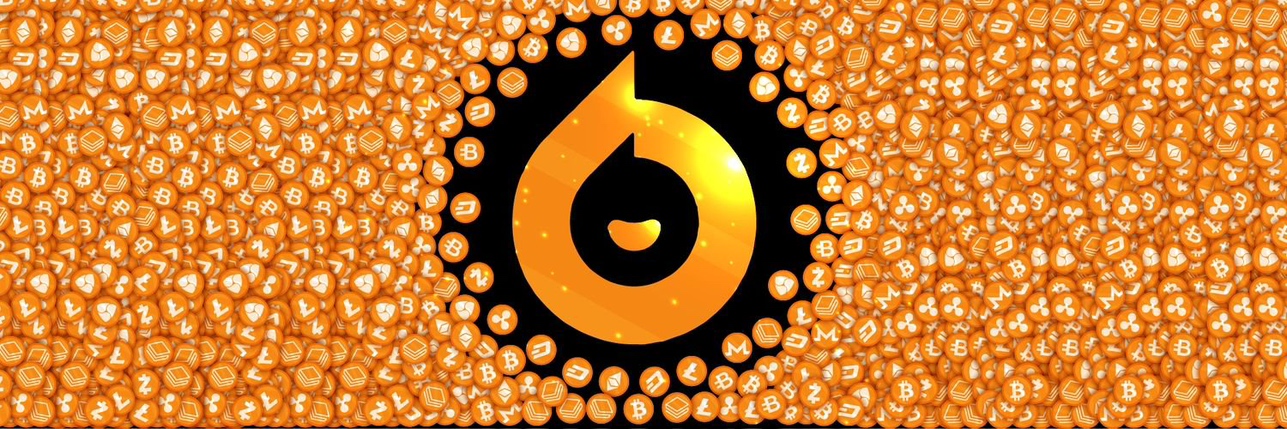


FREEdom Coin PreisFREE
FREE zu EUR Umrechner
Wie denken Sie heute über FREEdom Coin?
Über FREEdom Coin (FREE)
Kryptowährungen haben in den letzten Jahren weltweit an Beliebtheit gewonnen. Eine der am häufigsten diskutierten Kryptowährungen ist der FREEdom Coin. Der FREEdom Coin ist eine digitale Währung, die auf der Blockchain-Technologie basiert. Der FREEdom Coin ist darauf ausgerichtet, den Benutzern finanzielle Freiheit zu bieten. Er bietet ihnen die Möglichkeit, Transaktionen sicher und ohne Zwischenhändler durchzuführen. Diese dezentrale Natur macht den FREEdom Coin zu einer unabhängigen Währung, die von keiner Regierung oder Zentralbank kontrolliert wird. Eine der Hauptfunktionen des FREEdom Coin ist die Anonymität. Transaktionen werden über die Blockchain-Technologie abgewickelt, wodurch die persönlichen Daten der Benutzer geschützt sind. Dies ist ein attraktives Merkmal für Menschen, die ihre Privatsphäre schützen möchten. Ein weiteres wichtiges Merkmal des FREEdom Coin ist seine Sicherheit. Die Blockchain-Technologie macht es schwierig, Transaktionen zu manipulieren oder zu fälschen. Dies stellt sicher, dass die Währung vor Betrug geschützt ist. Darüber hinaus ermöglicht der FREEdom Coin schnelle und kostengünstige grenzüberschreitende Transaktionen. Im Gegensatz zu herkömmlichen Zahlungssystemen, die oft hohe Gebühren und lange Bearbeitungszeiten mit sich bringen, bietet der FREEdom Coin eine effiziente Lösung für internationale Überweisungen. Der FREEdom Coin hat auch das Potenzial, die finanzielle Inklusion zu fördern. Menschen, die auf herkömmliche Bankdienstleistungen keinen Zugriff haben, können den FREEdom Coin nutzen, um Geld zu senden und zu erhalten. Dies eröffnet ihnen neue Möglichkeiten für den Zugang zu Finanzdienstleistungen. Insgesamt hat der FREEdom Coin eine bedeutende Rolle für die Kryptowährungswelt gespielt. Mit seinem Fokus auf finanzielle Freiheit, Anonymität, Sicherheit und Effizienz hat er das Potenzial, das Finanzsystem zu revolutionieren. Es bleibt abzuwarten, wie sich der FREEdom Coin weiterentwickeln wird und welche Auswirkungen er auf die Weltwirtschaft haben wird.
AI-Analysebericht über FREEdom Coin
Live FREEdom Coin Preis heute in EUR
FREEdom Coin Preisverlauf (EUR)
 Niedrigster Preis
Niedrigster Preis Höchster Preis
Höchster Preis 
Was ist der höchste Preis von FREEdom Coin?
Was ist der niedrigste Preis von FREEdom Coin?
FREEdom Coin Preisvorhersage
Wie hoch wird der Preis von FREE in 2026 sein?
Wie hoch wird der Preis von FREE in 2031 sein?
FAQ
Wie hoch ist der aktuelle Preis von FREEdom Coin?
Wie hoch ist das 24-Stunden-Trading-Volumen von FREEdom Coin?
Was ist das Allzeithoch von FREEdom Coin?
Kann ich FREEdom Coin auf Bitget kaufen?
Kann ich mit Investitionen in FREEdom Coin ein regelmäßiges Einkommen erzielen?
Wo kann ich FREEdom Coin mit der niedrigsten Gebühr kaufen?
FREEdom Coin Nachrichten
FREEdom Coin Bestände
FREEdom Coin Bestandsverteilungsmatrix
FREEdom Coin Bestände nach Konzentration
FREEdom Coin Adressen nach Haltezeit

Globale FREEdom Coin Preise
- 1
- 2
- 3
- 4
- 5
Wie man FREEdom Coin(FREE) kauft

Erstellen Sie Ihr kostenloses Bitget-Konto

Verifizieren Sie Ihr Konto

FREEdom Coin in FREE konvertieren
FREE-Perpetual-Futures traden
Nachdem Sie sich erfolgreich bei Bitget angemeldet und USDT oder FREE Token gekauft haben, können Sie mit dem Trading von Derivaten beginnen, einschließlich FREE Futures und Margin-Trading, um Ihr Einkommen zu erhöhen.
Der aktuelle Preis von FREE ist €0.{7}6625, mit einer 24h-Preisänderung von -4.03%. Trader können von Futures profitieren, indem sie entweder Long- oder Short-Positionen eingehen.
Schließen Sie sich FREE Copy-Trading an, indem Sie Elite-Tradern folgen.
Neue Listings auf Bitget
Mehr kaufen
Wo kann ich FREEdom Coin (FREE) kaufen?
Videobereich - schnelle Verifizierung, schnelles Trading

FREE zu EUR Umrechner
FREEdom Coin Bewertungen
Bitget Insights





Verwandte Assets
Zusätzliche Informationen über FREEdom Coin
Coin-Übersicht
Coin bezogen
Trading bezogen
Traden
Earn
BTC/USDT
SpotBTC/USDT
MarginBTC/USDT
USDT-M FuturesBTC/USD
Coin-M Futures

















.png)















FREEdom Coin Soziale Daten
In den letzten 24 Stunden betrug der Stimmungswert in den sozialen Medien für FREEdom Coin 2.3, und die Stimmung in den sozialen Medien in Bezug auf den Preistrend von FREEdom Coin war Bärisch. Der Gesamt-Social-Media-Score von FREEdom Coin war 18,220, was den 65 unter allen Kryptowährungen einnimmt.
Laut LunarCrush wurden Kryptowährungen in den letzten 24 Stunden insgesamt 1,058,120 in den sozialen Medien erwähnt, wobei FREEdom Coin mit einem Häufigkeitsverhältnis von 0.01% erwähnt wurde und unter allen Kryptowährungen den Rang 183 einnimmt.
In den letzten 24 Stunden gab es insgesamt 208 einzigartige Nutzer, die über FREEdom Coin diskutierten, mit insgesamt FREEdom Coin Erwähnungen von 142. Im Vergleich zum vorangegangenen 24-Stunden-Zeitraum hat sich jedoch die Zahl der einzelnen Nutzer Anstieg um 119% und die Gesamtzahl der Erwähnungen Anstieg um 373% verändert.
Auf Twitter gab es in den letzten 24 Stunden insgesamt 4 Tweets, in denen FREEdom Coin erwähnt wurde. Davon sind Bulllisch für FREEdom Coin, 75% Bärisch für FREEdom Coin, und 25% sind neutral für FREEdom Coin.
Auf Reddit gab es in den letzten 24 Stunden 4 Beiträge, in denen FREEdom Coin erwähnt wurde. Im Vergleich zum vorherigen 24-Stunden-Zeitraum hat sich die Anzahl der Erwähnungen Anstieg um 100% erhöht.
Übersicht über alle sozialen Aspekte
2.3